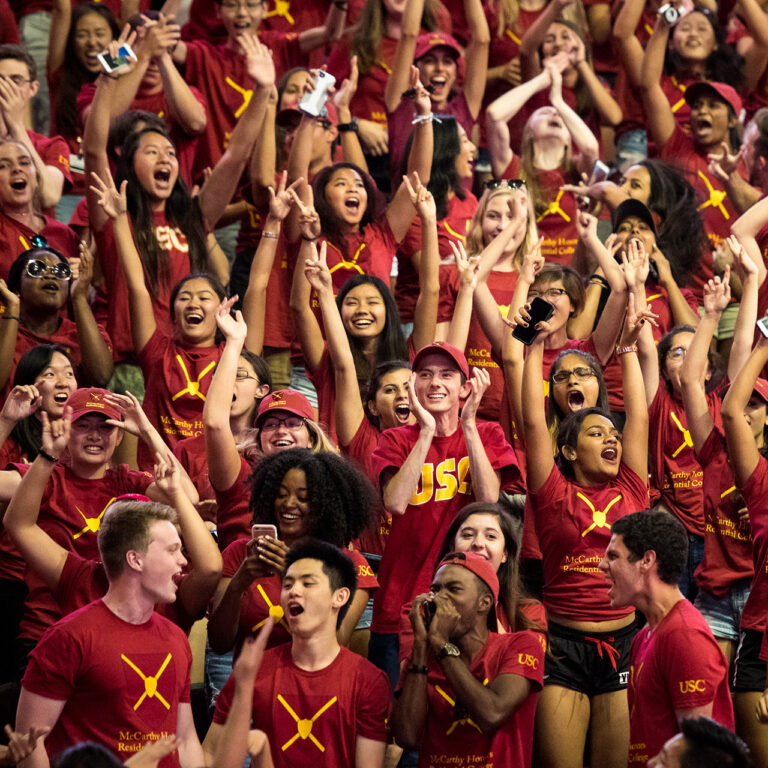Staff members Chelsea Graham, Sam Schongalla and Michael Wallich plant a tree in Founders Park for Arbor Day last year. (Photo/Gus Ruelas)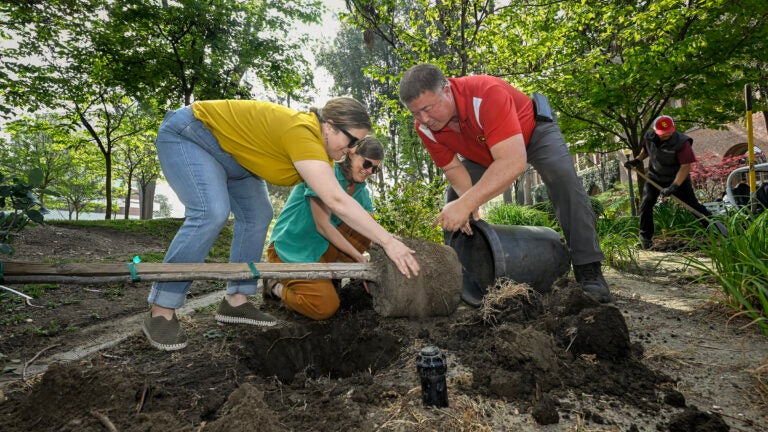
University
During Green Week, USC celebrates sustainability successes
GREEN WEEK: A host of changes are underway to make the university more sustainable. USC celebrates its fourth annual Green Week as September begins.
Wherever you are at USC, there are reminders of the university’s efforts to ensure it reaches its target of climate neutrality by 2025 and zero waste by 2028.
Whether it’s the hundreds of multi-stream waste diversion bins, newly installed solar panels or drought-tolerant native plants, the impact of USC President Carol Folt’s Sustainability “moonshot” is visible in big and small ways.
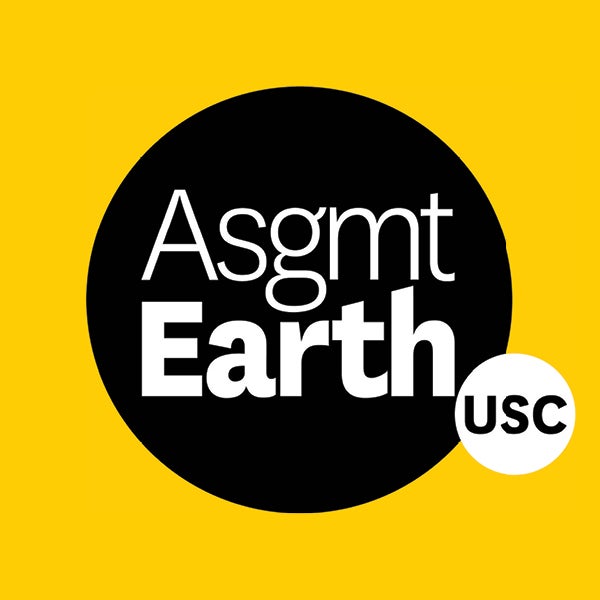
“Thanks to our students, faculty and staff over these past five years we have become more vigilant about achieving the goals we have laid out as part of the sustainability moonshot,” Folt said. “We have reduced plastic waste across our campuses. We are saving water and energy. We are making responsible choices as part of a larger university plan designed to improve our air, our water, and to make our environment a healthier place. And now, with a new academic year, more students and faculty can join on this journey.”
Now in its fourth year, Green Week, from Sept. 3-6, celebrates all the university has accomplished in making campuses and operations greener. It also heralds the collaboration between USC students, faculty and staff who are committed to the university’s sustainability mission dubbed “Assignment: Earth.”
New Ginsburg Hall debuts just after USC Green Week
There is much more still to come. Later this month, university leaders and sustainability supporters will cut the ribbon on the new Dr. Allen and Charlotte Ginsburg Human-Centered Computation Hall.
The seven-story structure, home to faculty affiliated with the new USC School of Advanced Computing at the USC Viterbi School of Engineering, will boast a host of sustainability-inspired features including state-of-the-art solar panels, a rainwater capture system and electric vehicle charging stations.
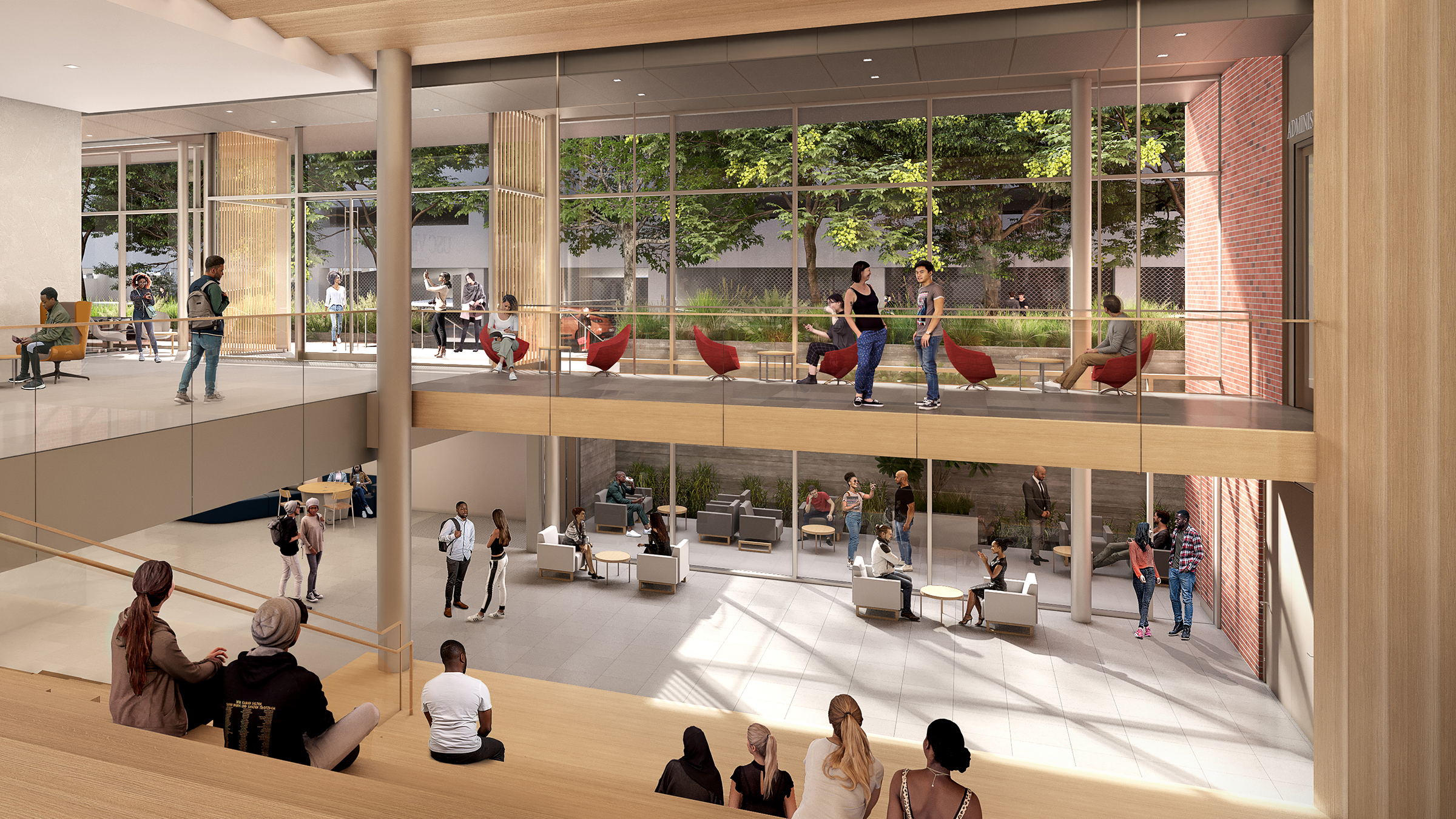
More than 80% of regularly occupied spaces benefit from natural light. Drought-tolerant plants are integrated in the space, and it is anticipated the building will be 37% more energy efficient than a typical dry-lab building. To reduce Co2 emmissions the building was constructed with existing and recycled steel. Recycled concrete aggregate was also used to produce new concrete slabs. Inside it features sustainably sourced wood certified by the Forest Stewardship Council.
USC also continues to work toward making existing buildings more environmentally friendly. The recently opened USC School of Dramatic Arts building is an example of what can be done to transform the university’s historic structures.
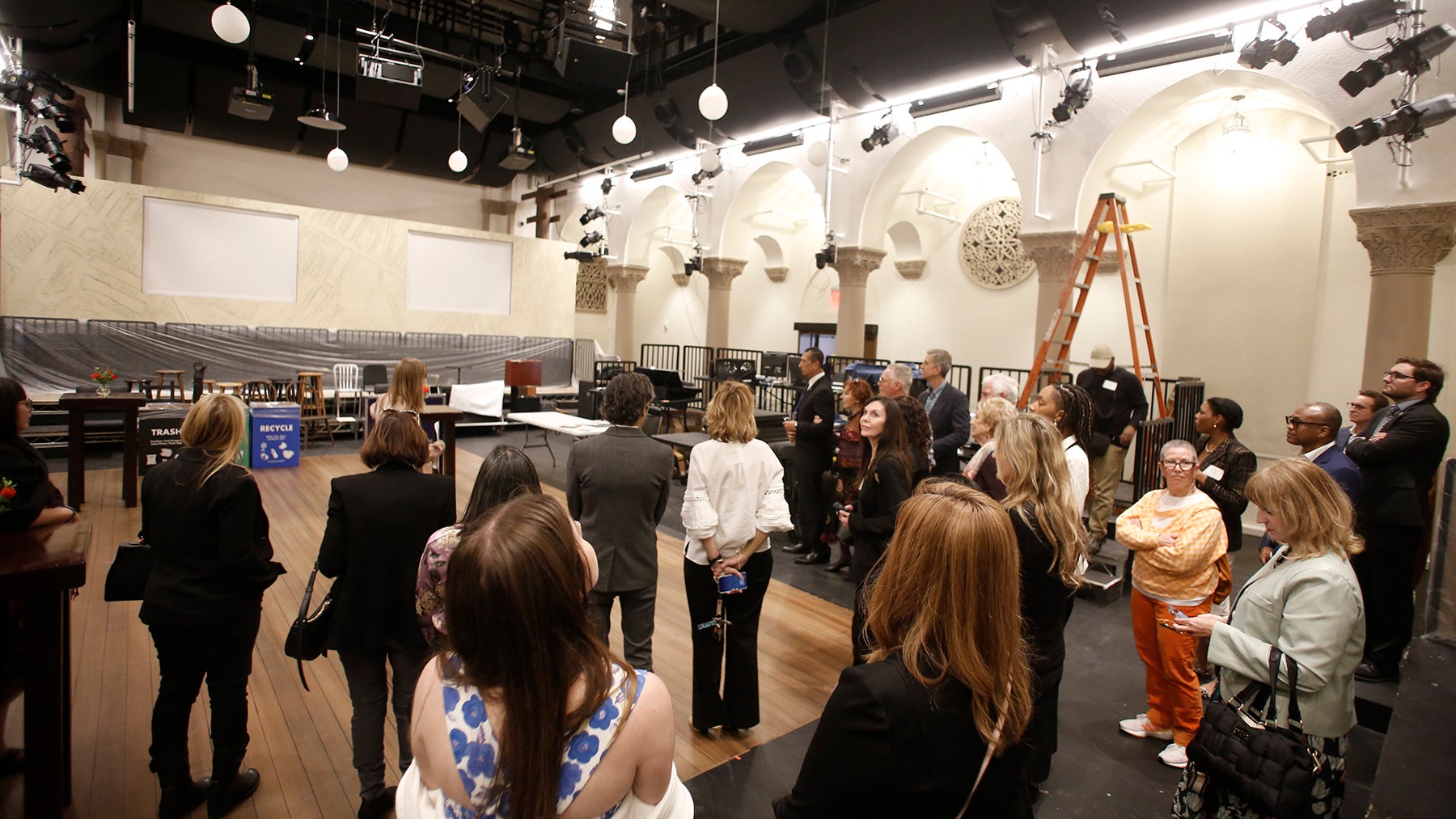
It was renovated with sustainably sourced materials and fitted with an efficient all-electric heating, ventilation and air conditioning system. Energy-saving insulation was added as was solar reflective roofing and paving materials.
“[The] new Ginsburg Hall and the rehabilitation of the former United University Church creating the USC School of Dramatic Arts building mark significant milestones in progress toward the goals of Assignment: Earth,” said Jon Soffa, university architect and executive director of USC Facilities Planning and Management.
“Both employ a range of building sustainable strategies to reduce energy, water, emissions and waste and support occupant comfort and well-being. Both projects are in final testing and documentation stages in pursuit of the highest levels of Leadership in Energy and Environmental Design (LEED) Certification from the U.S. Green Building Council.”
USC Green Week: More renewable energy
USC is also expanding its renewable energy resources. In 2020, more than 1,500 solar modules covering 50,000 square feet were added to the Galen Center, and last year the rooftops of the Windsor, Vista, Stardust and Seven Gables graduate housing apartments were similarly transformed.
“As part of USC’s Assignment: Earth sustainability framework, the university has an ambitious goal of climate neutrality for Scope 2 emissions by 2025,” said Zelinda Welch, director of energy and sustainability at USC Facilities Planning and Management. “To help us achieve it, we’ve just launched a comprehensive Solar Master Planning effort that will identify the best parking structure and building rooftops for solar installations at [the University Park and Health Sciences campuses], USC Village and [the Los Angeles] Memorial Coliseum, as well as major off-campus buildings. And this year we’re installing a new ~600kW rooftop solar array on the Carole Little Building, which will provide 8% of CAL’s electricity.”
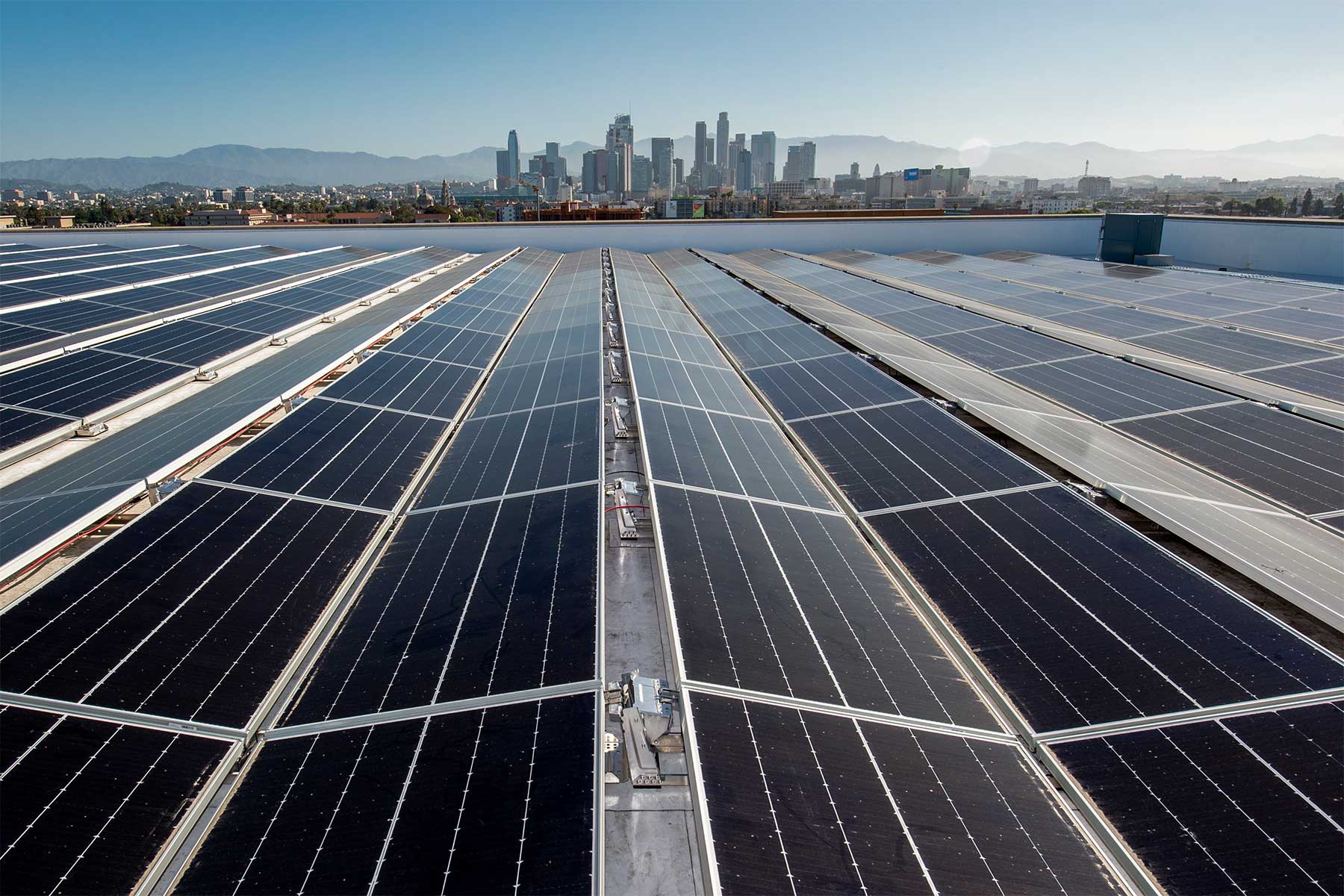
Gathering and monitoring water usage data is essential to conservation efforts. The department is currently installing sub-metering at six buildings at USC Village and seven boiler plants. It recently completed installations at 16 buildings and four fountains on the University Park Campus. It has plans to install more at 20 locations in the upcoming months.
The amount of energy used by outdated light fixtures is also being addressed. In the last fiscal year, more than 1,000 outdoor lamps at the University Park Campus were converted to LED, saving more than 670,000 kilowatt-hours. A similar effort in The Music Complex, part of the USC Thornton School of Music, saw the introduction of over 1,200 LED fixtures and an estimated saving of 300,000 kilowatt-hours. In the coming months, fixtures in 14 buildings (10 at the Health Sciences Campus and four at the University Park Campus) will be upgraded, saving over 2 million kilowatt-hours.
There are also significant changes ahead to the landscape at the university. “The Assignment: Earth framework also has a goal for USC to implement a long-term plan for landscaping and grounds that will reduce potable water use, enhance biodiversity and expand the health benefits of our landscape,” Welch said. “To achieve that goal, in 2023 we developed the USC Native and Climate Adapted Plant Master Plan, and now we’re transitioning campus landscape plots to be more sustainable, supporting our thriving tree canopy and engaging the USC community around the very visible benefits of this work.”
Marking zero waste and less plastic during Green Week
If you’ve attended an event at the USC-managed Coliseum, you will likely have seen firsthand the impact of the stadium’s zero waste program. The historic venue was recognized as a 2024 Green Sports Alliance Waste Champion Award winner for diverting more than 90% of waste from landfill. It previously won the award in 2022.
At the start of the 2023 Trojan football season, reusable cups were introduced at all draft beer and cocktail kiosks, diverting over 30,000 cups from landfill with a 98% return rate. This season there are plans to begin using a BioSpeed M2 digester to turn waste food into compost that can be used as fertilizer for trees and plants around the venue. The new machine is capable of processing 160-220 liters of organic waste per day.
“We are not waiting for the [2028] Olympics to put our best foot forward in the arena of sustainability,” said Matthew Buswell, director of stadium operations. “We are constantly trying to push the envelope to find the next things we can do to become more sustainable, not because it is the flashy thing to do, but because it is the right thing to do.”
Earlier this year, USC earned a gold rating from the Association for the Advancement of Sustainability in Higher Education for its many efforts to create a more sustainable university. Since the purchase of single-use plastic beverage bottles was eliminated for all on-campus and off-campus operations and events in July 2022, almost 5 million plastic bottles have been avoided.
Last year, USC waste management, along with the USC grounds department, collected over 22 tons of recycling and six tons of compost generated from tailgating events held on campus for seven home football games. As the football tailgating season returns the Waste Management mobile recycling station will be back at the McCarthy Quad with hopes of improving on last year’s total diversion rate of 55%.
With so many sustainability initiatives changing life at USC, a new dashboard has been created to help better understand the progress being made.
The Assignment: Earth dashboard helps track progress toward USC’s sustainability goals.
“The Assignment: Earth dashboard is a great tool for tracking and transparently sharing the progress USC is making towards achieving our 27 ambitious goals across five domains,” said Mick Dalrymple, USC’s chief sustainability officer. “With so much data to track and report, we felt it was important to develop a user-friendly interface that provides both high-level snapshots as well as the ability to dig in on specific goals.
“The bottom line is that though we certainly have ambitious tasks ahead of us, in the 2 ½ years since President Folt announced Assignment: Earth, Trojans have made tremendous progress.”
